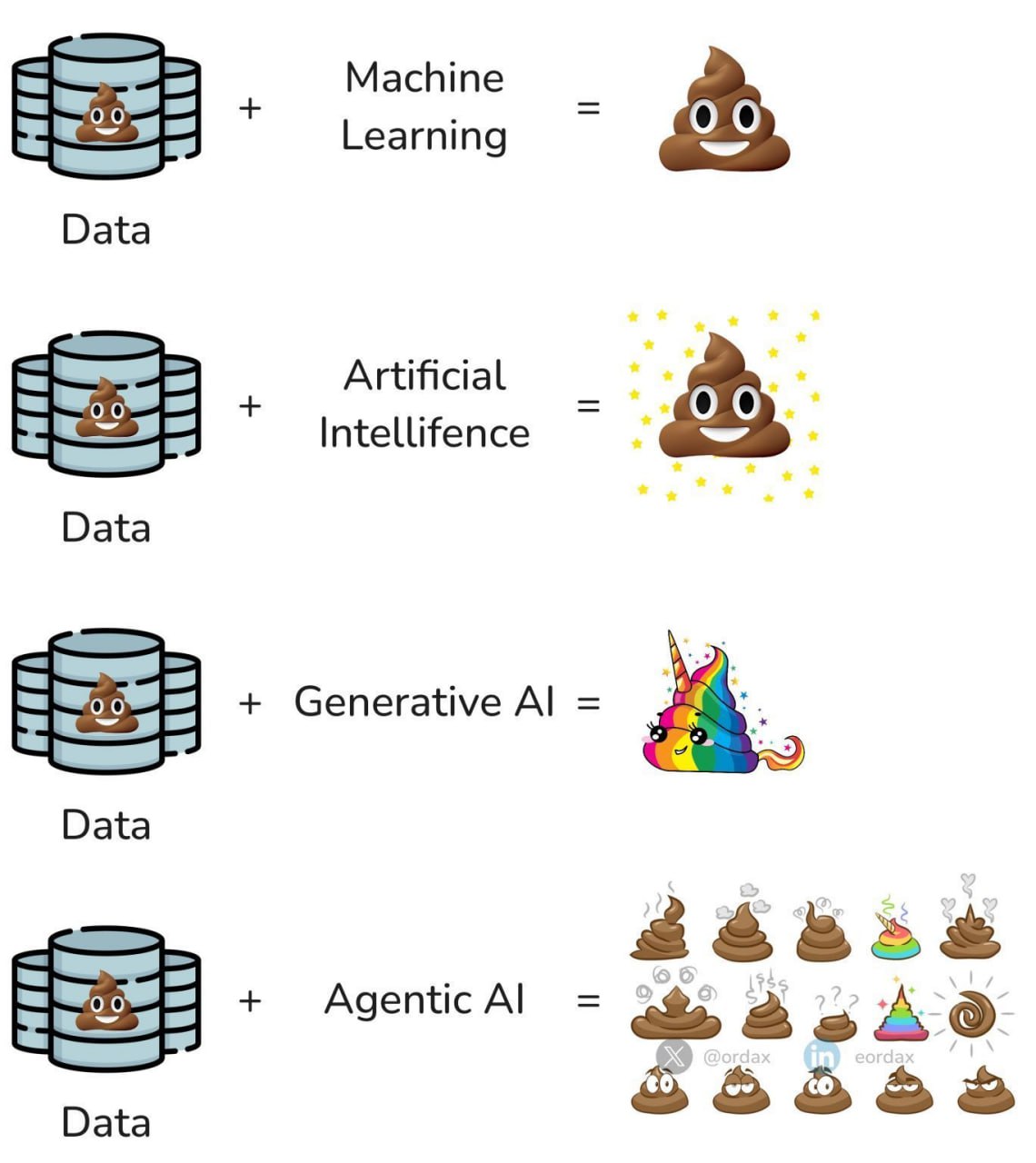

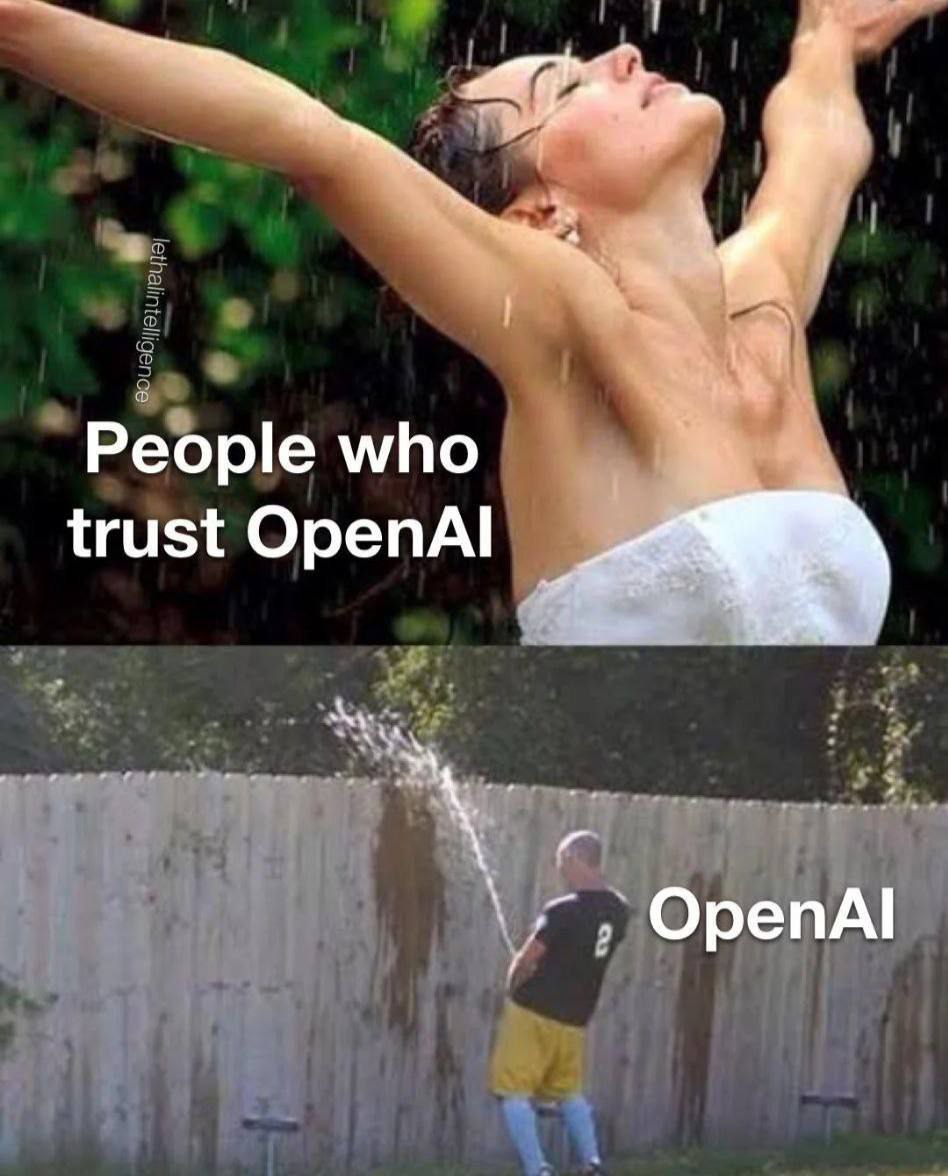
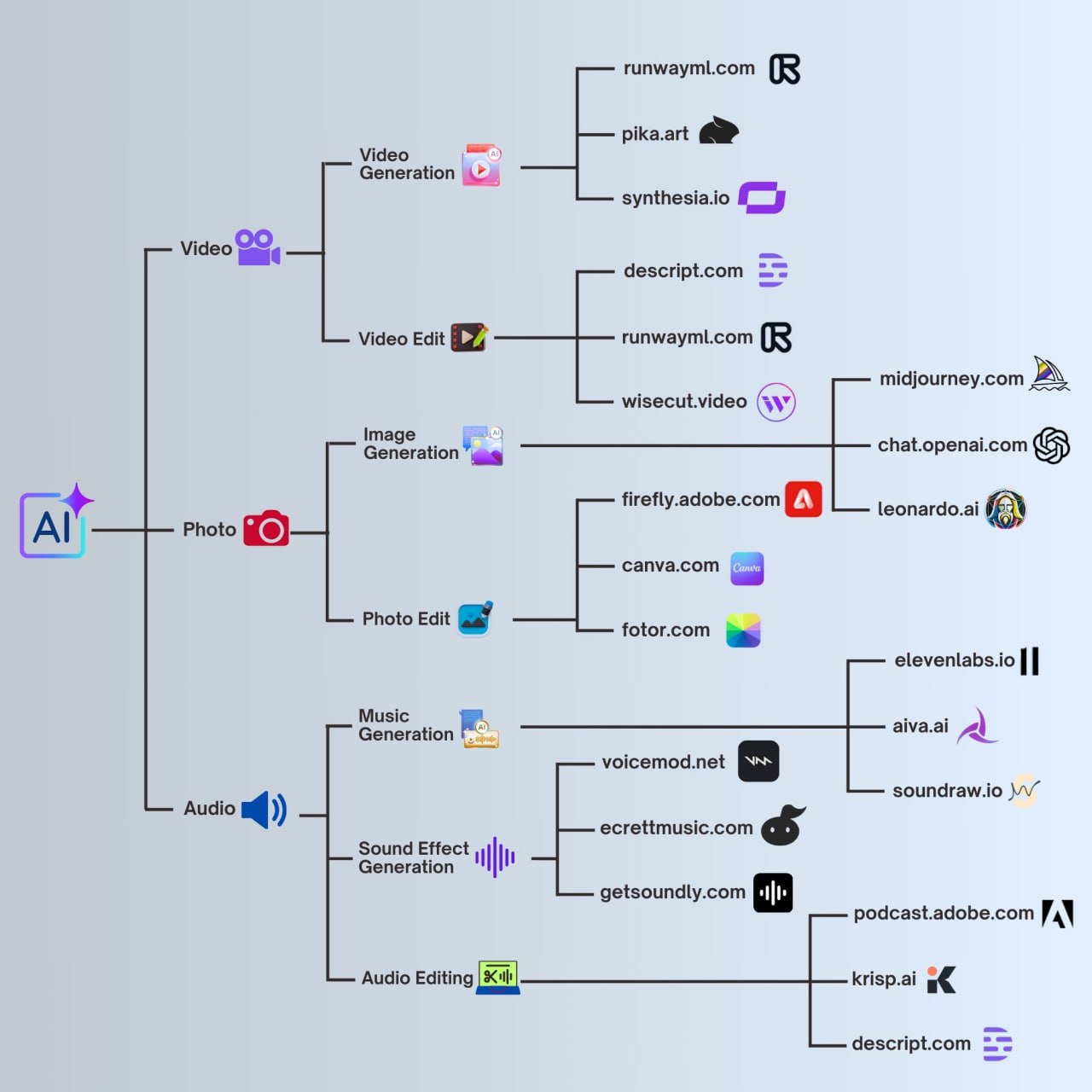
- (AI, python) самые популярные ML-библиотек для искуственного интелллекта/aritigicial intelligence AI: PyTorch, TensorFlow, Scikit-learn
- Подпинывание через ИИ зависших тасков https://habr.com/ru/posts/921722/
- Хорошая статья про deepfake от сбербанка
https://www.sberbank.ru/ru/person/kibrary/investigations/berdyansk-glava-5
Так, через Telegram-бот «Глаз Бога» можно было заказать «расширенный поиск» по требуемому субъекту: найти о нем по номеру телефона дополнительную информацию в социальных сетях и коммерческих сервисах Вконтакте, Skype, Одноклассники, WhatsApp, Telegram, GetContact, NumBuster, TrueCaller, объявления на Avito, Youla, Auto, Cian и пр. Кроме того, сервис позволяет отправить анонимное SMS-сообщение, а за 15 рублей получить образец голоса абонента. При выборе подобной услуги абоненту поступает звонок, определяющий доступность телефона, и в случае, если абонент принял вызов, включается диалог с голосовым роботом. Файл с записью голоса поступает инициатору запроса сразу после завершения диалога, длительность составляет 10 секунд, при этом можно выбрать сценарий звонка – «мужчина», «девушка», «грубый», «наглый», «школьник», «курьер».
- ИИ настолько распространен, что уже есть даже атаки на отправление данных ИИ
- https://www.perplexity.ai/
https://t.me/safebdv/674
По выходным провожу тестирование разных систем Artificial Intelligence. В какой-то момент понял, что перестал задавать вопросы в google, chatgpt и заменил их на perplexity. Всем советую. Попробуйте Тоже перешел в части поиска только на перплексити, но надо очень внимательно относиться к ответам и перепроверять полученную инфу. Правда, чаще всего, в ответе перплексити уже есть необходимые линки
- про
генеративныйгенерирующий ИИ https://t.me/safebdv/670
😎 Почему Generative AI кто-то перевел как генеративный ИИ? По-моему, это не по-русски. Генеративный - кто так говорит? 😎 Я бы использовал как генерирующий ИИ или синтезирующий ИИ или творческий ИИ или созидательный ИИ или порождающий ИИ. Вам какой вариант нравится? Мне нравится творческий ИИ😇.
- Для редактирования фоток лично я обычно гуглю нужное действие и пробую разные платформы. А инфа от Батранкова ниже
ИИ для создания и редактирования картинок и видео Сraiyon - просто волшебная, бесплатно, без регистрации, зарос по-русски, еще удаляет фон в картинках и делает векторую графику, генерирует сама новый промт и делает множество вариантов сразу Шедеврум - бесплатная нейросеть от Яндекса, без регистрации, запрос по-русски, очень красиво получается Fusion Brain (Kandinsky 3.1) — бесплатная нейросеть от «Сбера», требует регистрации, запрос по-русски Dream - бесплатно, логин через google, стиль — от чернильной графики до стрит-арта, есть мобильное приложение Easy-Peasy.AI — агрегатор популярных нейросетей DALL-E 3, Midjourney v6, Stable Diffusion 3.0, FLUX.1и Stable Diffusion XL, по-русски запросы, бесплатно 5 картинок, требует регистрации, вообще там 200 функций внутри: транскрибирует аудио, рисует дизайн квартир, пишет посты за вас в linkedin, пишет SWOT анализ и так далее. Подробнее в статье
- прикольная статья о обучении ИИ распознаванию банковских реквизитов/номеров телефонов

- самый перспективный и опасный Искусственный Интеллект для человечества – общий/универсальный (Artificial General Intelligence, AGI)
- высока вероятность что он будет основан на типе нейронной сети Трансформер (Transformer, deep learning architecture), которая работает с последовательностью, этот тип совершил рывок в развитии ИИ и позволил создать достаточно универсальные решения – переводчики, ChatGPT/YandexGPT, умные машины
- краткое описание алгоритма работы управления авто: собрать информацию, предсказать обстановку, спланировать поведение
- краткое описание алгоритма работы управления авто: собрать информацию, предсказать обстановку, спланировать поведение
- так же вероятно он будет поддерживать мультимодальные модели Visual Language Models (VLM) – эти модели способны обрабатывать информацию разной природы, например текст и картинки
-
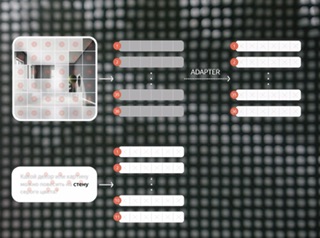
Screenshot
-
- высока вероятность что он будет основан на типе нейронной сети Трансформер (Transformer, deep learning architecture), которая работает с последовательностью, этот тип совершил рывок в развитии ИИ и позволил создать достаточно универсальные решения – переводчики, ChatGPT/YandexGPT, умные машины
- сейчас перед ИИ сделан целый pipeline разных обработчиков, чтобы на вход ИИ сформулировать вопрос так, чтобы он его понял
-

Screenshot
-
- рекомендательные системы ИИ очень развиваются
- реклама
- музыка – раньше музыка исходила из принципа построения модели под каждому пользователя, сейчас исходя из каждого трека (его звучанию) выбирается пользователь, плюс такой схемы это быстрое раскрашивание новых-хороших треков от неизвестных исполнителей
- сделал себе новый логотип на сайт с помощью ИИ – помог logomakerr.ai, шедеврум и кандинский не очень подходят для этой задачи. К слову о том, что именно специализированные под задачу ИИ хороши.
- можно достаточно просто поднять «свой» ИИ на базе Stable Diffusion (нейросеть от группы студии Stability.ai с открытым исходным кодом) и видеокарты типо GeForce RTX 3070
- (маркетинговое) Сравнение Signature based detection (Emsisoft Emergency Kit) VS AI based detection (DeepArmor)
- На основе данных курса Azure Fundamentals. Так же пара слайдов ниже взята у Droider.
- Принцип работы ИИ сход с принципов работы человеческого мозга
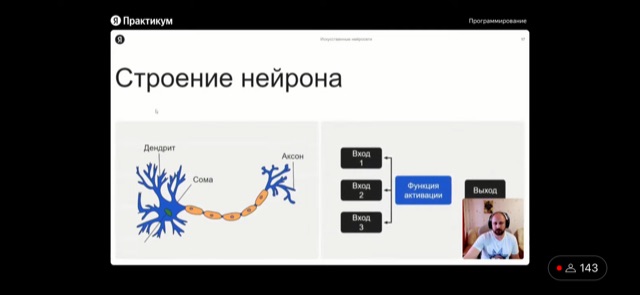
- При работе с ИИ самой частой задачей является управление весами узлов

- В яндексе с использованием нейронных сетей (типа трансформеры) сейчас решается ключевая задача поиска – ранжирование выдачи в поиска (сортировка по приоритету насколько документы хорошо отвечают на запрос пользователя). Для обучения модели YATI данной нейронной сети с сотней миллионов параметров используют суперкомпьютеры т.к. обучение модели требует огромного количества мощностей. Суперкомпьютеры эти соединены в сеть InfiniBand, подробнее о ней на Yandex Nexthop 2022.
- Хорошая статья практика по метрикам для оценки ML моделей
- с чем работает ML
-
Данные (фичи) – самое важное по практике :/
-
Разметка этих данных
-
Модель
-
Предсказания модели
-
- accuracy, precision, recall, F1score
- с чем работает ML
accuracy = (tp + tn) / (tp + fp + fn + tn) precision = tp / (tp + fp) recall = tp / (tp + fn) f1_score = 2 * (recall * precision) / (recall + precision)
-
- accuracy, лично я считаю, является наиболее универсальной и главное понятной метрикой оценки, если пытаться осуществлять оценку только на основе одной метрики (attention: автор на практике в статье выше описал почему при сравнении моделей это плохое упрощение) – это простая сумма всех правильных решений модели/сумма всех решений. Кроме того остальные метрики/показатели сознательно не учитывают верно-отрицательные (TN) решения и это, очевидно, спорно.
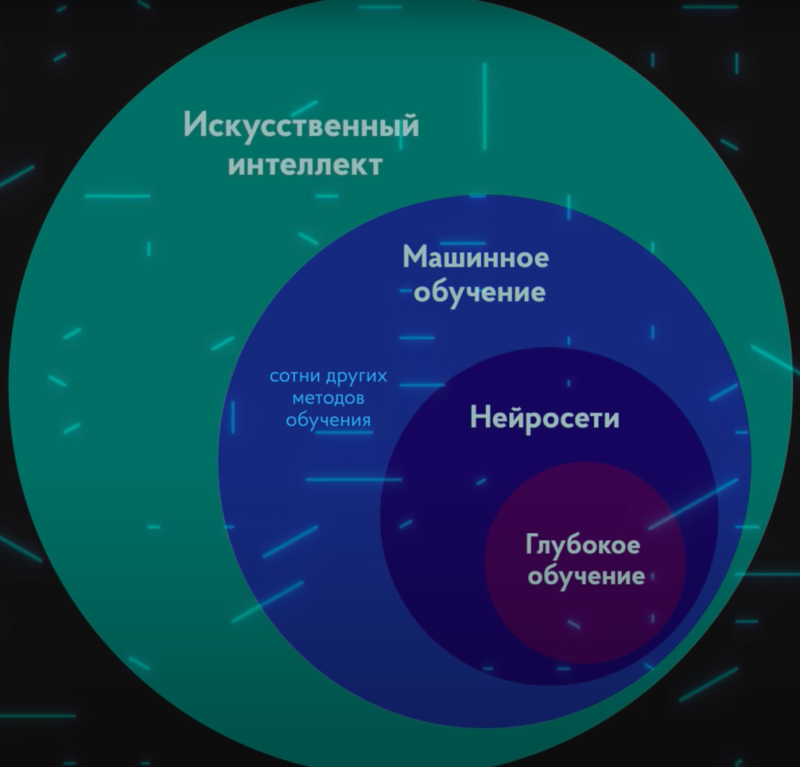
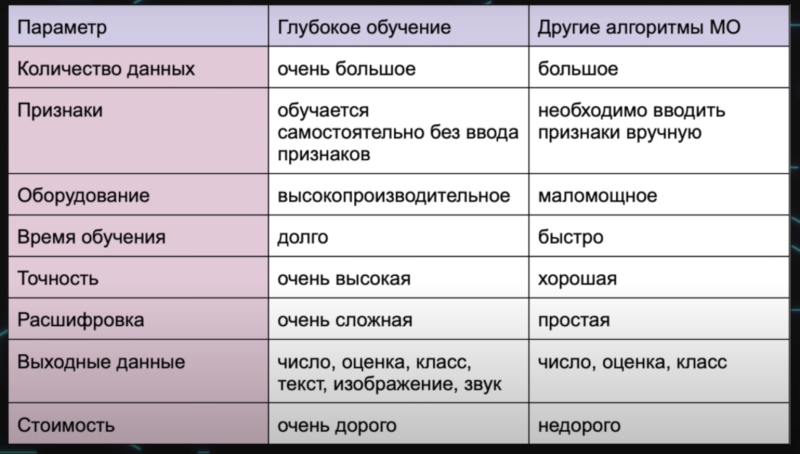
Artificial Intelligence (AI) is a category of computing that adapts and improves its decision-making ability over time based on its successes and failures.
- AI, in the context of cloud computing, is based around a broad range of services, the core of which is machine learning.
- Machine learning is a data science technique that allows computers to use existing data to forecast future behaviors, outcomes, and trends.
- Using machine learning, computers learn without being explicitly programmed.
- AI is one focus that could transform every area of a business. Such transformation is limited only by the creativity and imagination of the organization.
- Forecasts or predictions from machine learning can make apps and devices smarter. For example, when you shop online, machine learning helps recommend other products you might like based on what you’ve purchased.
The Marketing team is convinced that it can increase sales dramatically by suggesting add-on products that complement the items in a shopper's cart at the point of checkout. The team could hard-code these suggestions, but it feels that a more organic approach would be to use its years' worth of sales data as well as new shopping trends to decide what products to display to the shopper. Additionally, the suggestions could be influenced by product availability, product profitability, and other factors. The Marketing team's existing data science experts have already done some initial analysis of the problem domain, and have determined that its plan might take months to prototype, and possibly a year to roll out. > Finally, it sounds like the Marketing team already employs some data science experts, and the team is willing to make at least a year-long commitment to building, testing, and tweaking the models to be used.
there are two basic approaches to AI
- The first is to employ a deep learning system that’s modeled on the neural network of the human mind, enabling it to discover, learn, and grow through experience.
- The second approach is machine learning, a data science technique that uses existing data to train a model, test it, and then apply the model to new data to forecast future behaviors, outcomes, and trends.
machine learning (ML)
- О DGA detection с помощью ML подробнее в DNS, из интересного: No machine learning model is perfect! Some benign domains will be mistakenly labeled as false positives.
- Пример огромного количества эвентов, которые может генерировать SIEM с ML аналитикой (в данном случае Elastic Stack Detection Rules) на основе пользовательской активности (со знанием что норма, а что нет для каждого пользователя) – процессы, сеть, ааа, геолокация, время доступа и проч.
ml_auth_rare_hour_for_a_user_to_logon.toml ml_auth_rare_source_ip_for_a_user.toml ml_auth_rare_user_logon.toml ml_auth_spike_in_failed_logon_events.toml ml_auth_spike_in_logon_events.toml ml_auth_spike_in_logon_events_from_a_source_ip.toml ml_high_count_network_denies.toml ml_high_count_network_events.toml ml_linux_anomalous_compiler_activity.toml ml_linux_anomalous_metadata_process.toml ml_linux_anomalous_metadata_user.toml ml_linux_anomalous_network_activity.toml ml_linux_anomalous_network_port_activity.toml ml_linux_anomalous_process_all_hosts.toml ml_linux_anomalous_sudo_activity.toml ml_linux_anomalous_user_name.toml ml_linux_system_information_discovery.toml ml_linux_system_network_configuration_discovery.toml ml_linux_system_network_connection_discovery.toml ml_linux_system_process_discovery.toml ml_linux_system_user_discovery.toml ml_packetbeat_dns_tunneling.toml ml_packetbeat_rare_dns_question.toml ml_packetbeat_rare_server_domain.toml ml_packetbeat_rare_urls.toml ml_packetbeat_rare_user_agent.toml ml_rare_destination_country.toml ml_rare_process_by_host_linux.toml ml_rare_process_by_host_windows.toml ml_spike_in_traffic_to_a_country.toml ml_suspicious_login_activity.toml ml_windows_anomalous_metadata_process.toml ml_windows_anomalous_metadata_user.toml ml_windows_anomalous_network_activity.toml ml_windows_anomalous_path_activity.toml ml_windows_anomalous_process_all_hosts.toml ml_windows_anomalous_process_creation.toml ml_windows_anomalous_script.toml ml_windows_anomalous_service.toml ml_windows_anomalous_user_name.toml ml_windows_rare_user_runas_event.toml ml_windows_rare_user_type10_remote_login.toml
- Пример почему ML зачастую лучше чем
- сигнатуры – сигнатуры нужно писать, а ML уже “как-то” обучен и работает. Кроме того сигнатуры нужно писать универсально, что в некоторых случаях невозможно (пример с DGA).
- ревер инжениринг – нужно разбираться как каждый из DGA алгоритмов и вариаций конфигураций этих алгоритмов работает перед тем, как блокировать запросы к доменам
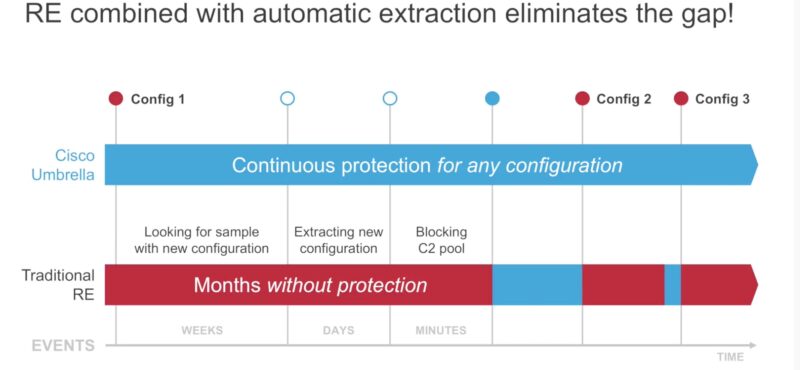
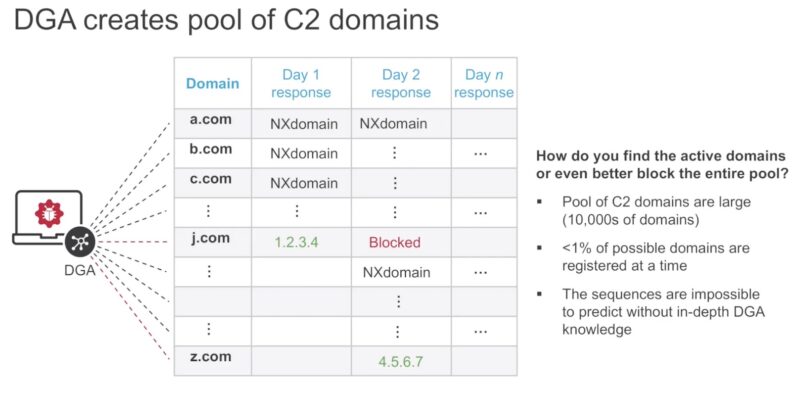
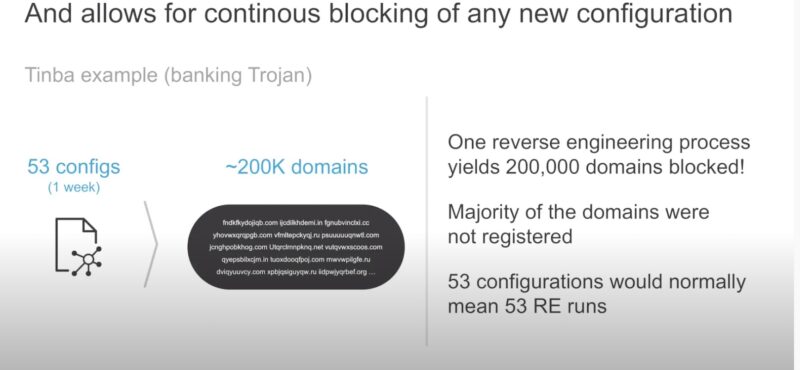
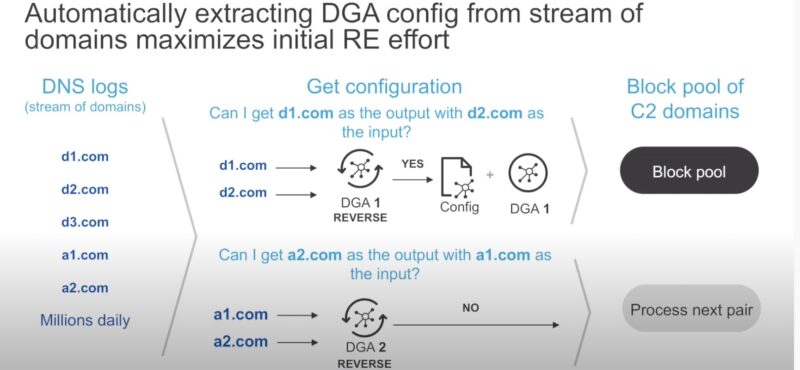
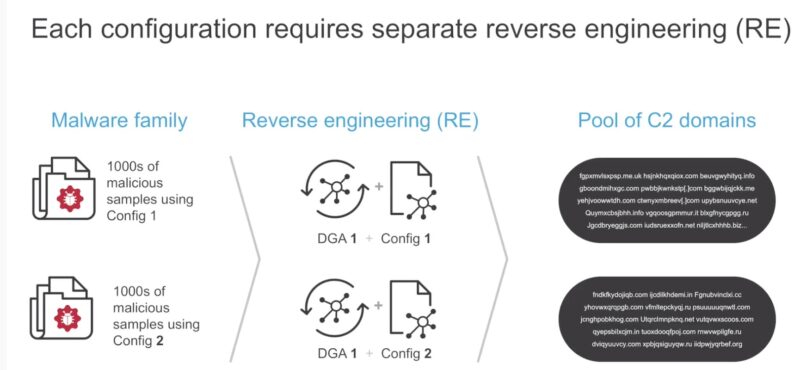
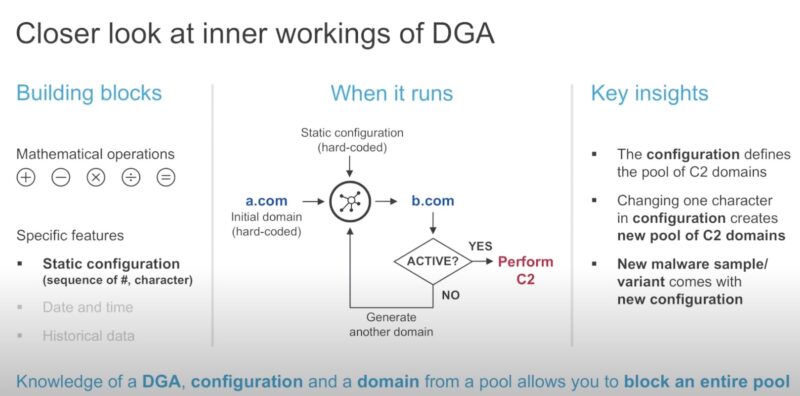
Virtually every device or software system that collects textual, visual, and audio data could feed a machine learning model that makes that device or software system smarter about how it functions in the future.
Forecasts or predictions from machine learning can make apps and devices smarter. For example, when you shop online, machine learning powers product recommendation systems that offer additional products based on what you’ve bought and what other shoppers have bought who have purchased similar items in the past. Machine learning is also used to detect credit card fraud by analyzing each new transaction and using what it has learned from analyzing millions of fraudulent transactions.
Machine learning deployment steps:
1 – define a goal for the ML system
2 – acquire sample data containing factors that might correlate to a positive or negative decision.
Analyse the data to ensure there were no biases. That the sample represents the entire population of data. And that there’s no order or weight implied.
The quantity and the quality of the data is vitally important, since it will be what is used to train and evaluate the system.
The data must contain the answer correlated to our goal.
3 – split data into:
– training data for building the algorithm (the rules for making new decisions based on similar data in the future)
– the evaluation data to test the algorithm
4 – choose a model (data scientist & researchers created models for different purposes: some work well with visual data, others with sequence data/text-based data) these models will be used to generate algorithm
5 – train model supplying our training data and allowing our model to generate an algorithm that correlated various factors into a decision. The model decides which factors should be weighted and under what circumstances.
6 – use the evaluation data to test our new algorithm to see how accurate it is (example: 95%)
7 – after testing we may need to tweak the algorithm by hand tuning certain parameters and retesting
8 – deploy the system into a live environment where its conclusions can be utilized by our business
As we use the system, we can use our results to continue to train the model.
часть задач эксплуатационных, часть аналитических (опенца моделей0
– для нас достаточно accuracy (сумма верных решений/сумма всех решений) – увидим (если она есть) деградацию под нагрузкой с учетом всех показателей (TP, TN, FP, FN) при тестировании одним набором данных от итерации к итерации
– остальные показатели не используем (precision, recall, f1score) – они в первую очередь нужны и используются для сравнительной оценки разных ML моделей между собой перед выбором конкретной модели
ИНТЕРЕСНОЕ ИЗ ИССЛЕДОВАНИЯ JET/IKS (ВЫДЕРЖКИ)
https://disk.yandex.ru/i/XUezA6nfWviLfw
- Сеть и ИИ, RoCEv2. В связи с бурным развитием больших языковых моделей (LLM) и увеличением рабочих нагрузок, связанных с ИИ, многие мировые провайдеры перепроектируют свои крупные ЦОДы для размещения кластеров ИИ, выполняющих эти специализированные задачи. Это привело к появлению новых сетевых архитектур, использующих концепцию интерфейсных (front-end) и серверных (back-end) сетей. Интерфейсная сеть управляет взаимодействием с пользователями, приемом данных и вычислительными задачами общего назначения. Серверная сеть предназначена для высокоскоростной передачи больших объемов данных между ИИ-ускорителями, такими как GPU. Она справляется с интенсив-ными вычислительными нагрузками, необходимыми для распределенного обучения и вывода больших моделей искусственного интеллекта. Поддержка RoCEv2 является основополагающим требованием в этой сети для обеспечения высокоскоростного взаимодействия между графическими процессорами.
- По сути, все описанные выше варианты сетевых архитектур относятся к категории интерфейсных сетей. Архитектура и технологии серверных сетей во многом определяются особенностями используемых ИИ-ускорителей. Они могут базироваться, в частности, на технологиях Lossless Ethernet (с использованием RoCEv2) или InfiniBand. Ряд мировых производителей, таких как, Cisco, Nvidia и Intel, разработали референсные архитектуры для таких сетей. Например, Intel предлагает каждый узел (c GPU-ускорителями) подключать к трем различным коммутаторам доступа (leaf), а каждый такой коммутатор – к выделенному набору spine коммутаторов.
- Подавляющее большинство (92%) либо не изменили свои планы, либо не рассматривали этот вопрос. Только четыре респондента ответили утвердительно. И двое из них планируют ради внедрения ИИ-систем переходить на другую архитектуру (топологию).
- Заметим, что ни один из опрошенных не планирует внедрять (для ИИ) сетевую технологию InfiniBand, хотя два заказчика ее уже используют. Отсутствие таких планов связано в том числе с высокими санкционными рисками применения зарубежных решений. Развитие сетей отечественных ЦОДов будет происходить на основе технологии Ethernet, которую российские производители уже неплохо освоили.

